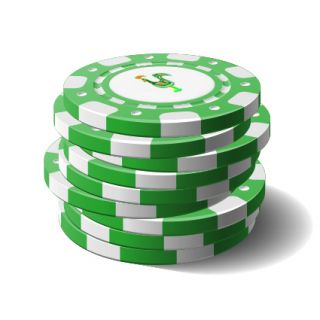Portugal Gambling Age
The SRIJ has been closely monitoring social games that are made available in Portugal and that use themes similar to the ones subject to regulation (for example, casino games, slot machines, poker or bingo), to assess whether these games should be subject to the licensing regime provided under the RJO. Minimum Age to Gamble in United States of America. Below you will find the minimum legal age to gamble in various locations around the U.S., Virgin Islands and Puerto Rico. In the 50 American states, some times you'll see a variance, this usually is due to Indian casinos having different age requirements in their casinos than state regulated.
Portuguese casino revenue has yet to fully recover from the impact of the global financial crisis, having fallen from a peak of €386m in 2008 to €309m in 2017, the most recent year for which data is available.

Land-based casinos in Portugal are restricted to specific gambling zones: Açores, Algarve, Espinho, Estoril, Figueira da Foz, Funchal, Porto Santo, Póvoa de Varzim, Troia and Vidago-Pedras Salgadas.
Portugal Gambling Tax
There are 12 casinos and one gaming room in operation in Portugal


Casinos can offer table games, including baccarat, blackjack/21, craps, cussec, American and French roulette and poker games.
The government may authorise other forms of games of chance at the request of existing operators, but the SRIJ must provide an opinion of the proposed activity. Casinos can also only use gambling material that has been previously authorised by the SRIJ.
Land-based poker is only allowed within casinos, either in cash games or tournaments, as it is considered a game of chance in Portugal.
Portugal’s gambling regulator, the Regulation and Inspection Service of Games (SRIJ), is a component of the Tourism Office.
Aside from casinos, the gambling market in Portugal is dominated by Santa Casa, an historic charitable organisation which holds a monopoly over lottery games, land-based betting on sports and horseracing.
A liberalised online gambling market was introduced in May 2016, but has faced challenges due in large part to a tough tax regime, with online casinos taxed at a variable rate of 15-30 percent of GGR, but is now worth roughly 4 percent of market-wide GGR.
It was confirmed in October 2018 that initiatives to soften Portugal’s online gambling tax regime, through a consolidation of online gambling tax at 25 percent of GGR, were to be excluded at the last minute from the 2019 Budget
A working group set up to analyse potential tax changes in Portugal was then due to report in February, 2019, but failed to publish any findings.

How to Date a Deck of Playing Cards
posted May 23, 2010, 9:35 AM by Taylor Bomarito [ updated Mar 13, 2011, 11:43 AM]
Portugal Gambling Age Rules
This is most of what I know about dating a deck of cards. This goes mostly for American decks and especially for USPC decks, but it pertains to others as well. I tried to make this post succinct, and not go into too much detail. Using all of this information in conjunction it should be possible to accurately determine the manufacturing date of a deck of playing cards within a range of a few years. USPC has acquired many playing card companies over the years. Using the list in the Playing Card Manufacturers Article on this website, you can narrow down the years a deck was made. If you see a deck was produced by one of these companies, you know it was produced prior to the acquisition date. However, you must keep in mind that much of the time a company's name was used many years after it's acquisition. The easiest way to tell the age of a deck of cards is probably by the back design, and a general knowledge of what has been produced in which eras. It must also be kept in mind that the same designs were sometimes discontinued and then reintroduced at a later date. This can give you a clue as to when they were made. Not much information exists as to which back designs were produced in which years, however I hope to collaborate more information on this so that it can be made available. In the Playing Cards section of this site, more information is available on specific decks.
Bar codes were introduced on USPC decks in the early 1980's. So, usually a deck without a bar code can be considered to have been produced prior to this time. You can assume most companies started using bar codes at this time as well. In the United States, there was a federal tax on playing cards until 1965. So basically if your deck has a tax stamp on the box, it was probably made before 1965. Keep in mind that a tax stamp may not be an absolutely accurate way to date a deck. Usually decks were stamped when they were marketed as opposed to when they were manufactured. So it is possible that the deck was produced years before the tax stamp was even applied. Also, if the deck is open than it is possible for the deck to be in the incorrect box, in which case the tax stamp offers no insight into the date of the actual deck. You can further narrow the manufacture date of the deck by seeing which stamps were used by which companies in which years. For this information and more about Tax Stamps, see the Tax Stamp Article on this website. This is a great way to date older sealed decks as well. MANUFACTURER SEALS After 1965, many manufacturers continued using stamps with their own design to seal the package. This is when modern playing card seals were developed. Most companies have changed the design of their playing card seals over time. I have collaborated this information to help in the dating of several non-USPC manufacturer's decks, as well as sealed USPC decks. For more information about Manufacturers Stamps, see the Manufacturers Stamps article on this website. Thus far, I have put together information about: The United States Playing Card Co. and Arrco Playing Card Co. ZIP CODESThis is really only relevant to decks in the United States. Zip codes were introduced in the United States on July 1, 1963. Usually on the outside of the deck's box, or even on the ace of spades there is a manufacturers address. If the address does not include a zip code than it was most likely made prior to 1963. An awesome way to date opened decks made by USPC is the dating code printed on the ace of spades at the time it was manufactured. The code is helpful in dating decks after 1904, the year it started. The code consists of a letter, and a 4-digit number. The letter is really the only thing helpful to collectors; the numbers mean nothing. National Playing Card Co. and New York Consolidated Co., at the time subsidiaries of USPC, also used these same codes. As Andrew Dougherty and Russell Playing Card Co. became part of USPC they also began to use the codes. Use this chart to determine the year the deck was printed. Since there is many dates for each letter, you should use the rest of this information to select the correct year for the deck.
This chart is reproduced from the Hochman Encyclopedia of American Playing Cards, an extremely helpful book for any avid playing card collector. These codes were phased out in 2009. There were also decks produced by U.S.P.C. that did not use these codes. Around 1965, U.S.P.C. began the practice of 'pre-facing' some decks, especially Congress decks. A supply of faces could be printed and stored and the backs could be added as needed. Therefore, Congress cards and any other pre-faced brands stopped using the codes altogether. However, most of the standard back designs always used these codes. In the United States and Europe cards did not have decorated back designs until the 1850's. So a deck with a blank back design could possibly be pre-1850. Other countries had patterned backs previous to this. The majority of playing cards were printed using wood blocks until about the 1870s. So make sure to check what kind of printing process was used on your deck. Two jokers were not included in card decks until around the 1870's. Also, corner indices and two-way court cards did not exist before this time. The court cards usually showed the legs and feet of the court. So if your deck includes these, it was likely produced after this date. Rounded corners were not used on playing cards until around 1875. So if your deck has flat corners, it was likely produced before this time. |